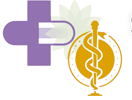
Swastham Medicare has a well-structured outpatient (OPD), inpatient (IPD), and daycare services providing holistic patient care. These services ensure the effective management of a wide range of medical conditions, catering to varying patient needs from consultations to short-term treatments and long-term admissions.
Outpatient Department (OPD)
Objectives
• Provide initial consultations and diagnostic evaluations.
• Offer follow-up care for chronic and post-treatment conditions.
• Reduce unnecessary hospital admissions through effective outpatient management.
Key Features
1. Specialty Clinics:
o Dedicated consultation rooms for specialists, including internal medicine, pediatrics, orthopedics, gynecology, and
general surgery.
2. Diagnostic Support:
o Integrated laboratory and radiology services for immediate investigations.
3. Preventive Care:
o Vaccination programs, health screenings, and lifestyle counseling.
4. Appointment Systems:
o Streamlined scheduling to minimize patient waiting times.
Infrastructure
• Comfortable waiting areas with clear navigation signage.
• Fully equipped consultation rooms with diagnostic tools like ECG and pulse oximeters.
Staffing
• General physicians and specialists for consultations.
• Nurses and administrative staff to assist in patient care and record management.
Inpatient Department (IPD)
Objectives
• Provide comprehensive care for patients requiring prolonged observation, treatment, or surgical interventions.
• Ensure a safe and supportive environment for recovery.
Key Features
1. Admission Types:
o Medical, surgical, and post-operative care.
o Intensive care for critically ill patients.
2. Room Categories:
o General wards, semi-private rooms, and private rooms to accommodate varying patient needs.
3. 24/7 Monitoring:
o Continuous nursing care and regular physician rounds.
4. Rehabilitation Services:
o Post-surgical physiotherapy and dietary counseling.
Infrastructure
• 50 beds divided across general, semi-private, and private rooms.
• Centralized nursing stations for efficient patient monitoring.
• Dedicated ICU beds for critical care cases.
• Dedicated NICU for infants
• Emergency call systems and bedside monitors for real-time monitoring.
Staffing
• Physicians and surgeons for primary and specialized care.
• Skilled nursing staff for round-the-clock monitoring.
• Support staff for patient transport, housekeeping, and nutrition services.
Daycare Services
Objectives
• Provide short-term treatments that do not require overnight stays.
• Minimize disruption to patients’ daily lives by offering efficient, same-day services.
Key Features
1. Surgical Procedures:
o Minor surgeries like excisions, biopsies, and endoscopies.
2. Therapeutic Interventions:
o Chemotherapy, dialysis, and wound dressings.
3. Diagnostic Procedures:
o Blood transfusions, IV infusions, and imaging-guided interventions.
4. Pre- and Post-Operative Care:
o Patient preparation and observation for a few hours post-procedure.
Infrastructure
• Dedicated daycare ward with recliners and observation beds.
• Procedure rooms equipped with sterilized instruments and supplies.
• Recovery area with monitoring equipment for post-procedure care.
Staffing
• Skilled nurses and technicians for procedure assistance.
• On-call doctors for emergency response and supervision.
Integration and Workflow
1. OPD Referrals: Patients requiring admission or advanced treatments are seamlessly transitioned to IPD or daycare.
2. IPD Coordination: Integrated lab and radiology support for timely investigations and treatment planning.
3. Daycare Discharge: Streamlined discharge processes with instructions for home care and follow-up.
Benefits
• OPD Services: Ensure early diagnosis, preventive care, and effective chronic disease management.
• IPD Services: Provide comprehensive and round-the-clock care for critical and non-critical cases.
• Daycare Services: Offer cost-effective and efficient care for minor procedures and therapies.
Conclusion
OPD, IPD, and daycare services in a 50-bedded hospital ensure that patients receive the right level of care at the right time. By integrating these services with advanced infrastructure and skilled personnel, the hospital can deliver efficient, patient-centric care while optimizing resource utilization.


